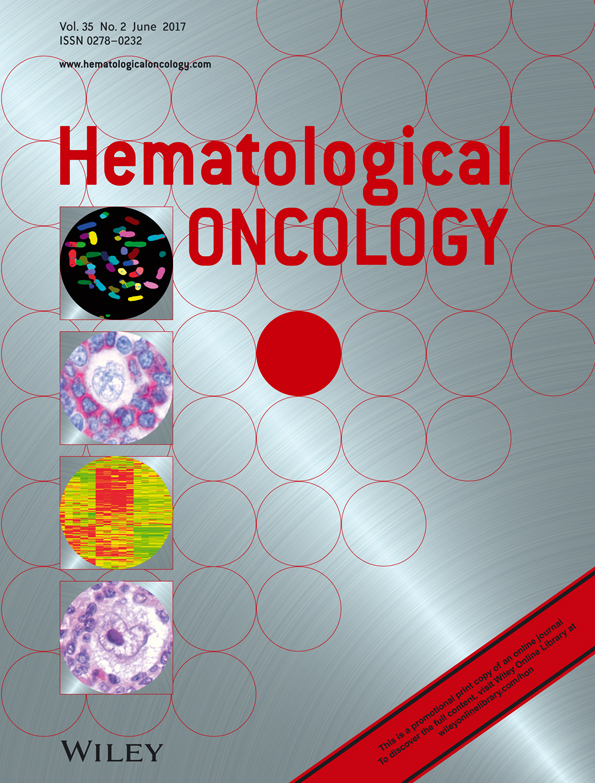Impact on survival of addition of etoposide to primary chemotherapy in diffuse large B-cell lymphoma: a Swedish Lymphoma Registry study
Abstract
No randomised study in the rituximab era has been performed specifically to evaluate addition of etoposide to treatment of diffuse large B-cell lymphoma (DLBCL). The aim of this study was to compare the outcome with three chemotherapy regimens (R-CHOP-21, R-CHOP-14 and R-CHOEP-14) in a population-based cohort in terms of overall survival, adjusted for clinical prognostic factors. Through the Swedish Lymphoma Registry, 3443 patients with DLBCL were identified 2007–2012. Among all patients, there was no evidence of a difference between the regimens, after adjustment for prognostic factors. However, when restricted to patients aged up to 65, R-CHOEP-14 was associated with superior outcome compared to both R-CHOP-21 (hazard ratio: 0.49, 95% confidence interval: 0.3–0.9, p = 0.028) and R-CHOP-14 (hazard ratio: 0.64, 95% confidence interval: 0.4–1.0, p = 0.06), when adjusted for prognostic factors. Results were consistent in an additional stratified analysis with patients grouped according to age and IPI-score. In conclusion, we could show that R-CHOEP-14 was associated with superior overall survival in patients with DLBCL aged up to 65 years, indicating that this may be a valid treatment option for this patient population. To further investigate which patient groups that may benefit the most from treatment intensification, R-CHOEP-14 should be compared to R-CHOP-21 in a randomised setting. Copyright © 2015 John Wiley & Sons, Ltd.




